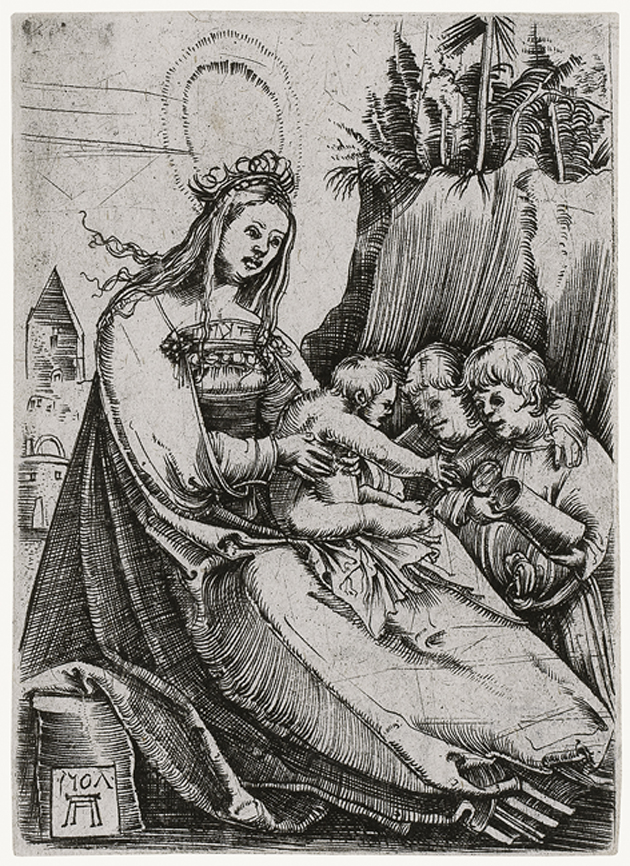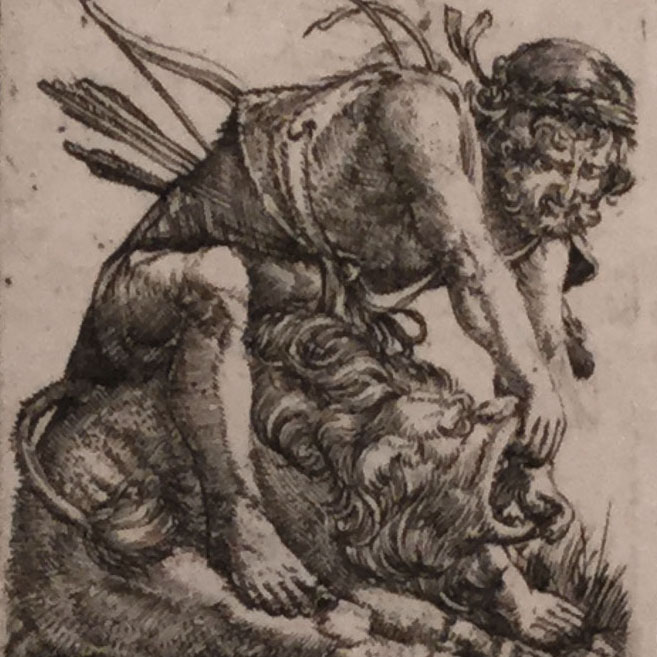Albrecht Altdorfer
Regensburg 1480 - 1538 C.
1507
Engraving, 72 x 51 mm
Bartsch n. 15; T.I.B. Vol. 14, p. 23, n. 15, II/II; Winzinger, p. 90, n. 102, IIb /IId; New Hollstein, p. 24, n. e.16 II/II
Signed bottom left on a stone with monogram: AA and dated 1507
Provenance:
Graf Yorck von Wartenburg 1805 – 1865 (Lugt 2669);
Albert W. Blum 1882 -1952 (Lugt 79b).
Fine brilliant impression, in the second state of two, with the parallel scratches on the left of the halo and the curly hair of the Virgin retouched, characteristics of the second state.
In fine condition, with thread margins or trimmed outside the platemark in places.
Very rare.
A very fine sheet, for the quality and for its prestigious provenances.
The Christ Child is seated on the Virgin’s lap, reaching for a tankard proffered by two boys. The iconography is quite unusual; it seems that the two figures are not heavenly putti but earthly boys who serve the Savior.
Information on the master
Altdorfer spent most of his life in Regensburg, becoming a citizen in 1505; in later years he became the city's official architect and member of his internal council. It was the guiding spirit of the Danube painting school. With the landscape of Regensburg (1522-25) and other works, Altdorfer painted the first pure landscapes, that is landscape scenes that did not contain human figures, from the times of antiquity. His favorite subject was the forests of Germany and Austria. He was also among the first to paint the light of sunsets and twilight. Many of his altarpieces are night scenes lit by artificial light, starlight or twilight with unusual brilliance. Altdorfer's masterpiece, The Battle of Alexander at Issus (1529, Alte Pinakothek, Munich), is a battle scene with incredible details and an extremely dramatic and expressive landscape.
The fantastic element that pervaded Altdorfer's paintings was also prominent in his drawings, most of them executed in black with white highlights on dark papers. Its chisels and its woodcuts, of small dimensions, are characterized by their inventive richness. At the end of his career he used, as an engraver, the new etching technique to produce a series of landscapes.
Other works of the master

